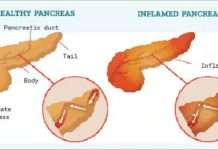Red palm oil is derived from the fruit of the oil palm tree, Elaeis guineensis (Fam: Arecaceae). It is a vegetable oil extracted mainly from the pulp of the palm trees fruit.
Constituents
Palm oil is packed full with powerful phytonutrients, like beta carotenes (which account for its dark red colour), lycopene and tocotrienols. This oil contains about 17 times the amount of carotene in carrots.

Similarly, the abundant tocotrienol (a form of Vitamin E) found in red palm oil is about 40 to 60 times more potent than tocopherol (another form of Vitamin E) in terms of antioxidant properties.
Uses
Palm oil is used as a cooking oil, for frying different types of cuisines, as a tasty ingredient for different cuisines, dietary supplement, as well as making personal care and household products.
Injuries like bruises, sunburn and cuts heal faster when palm oil is applied.
Some palm species in sub-Saharan Africa are used in various ritual practices. Palms are added as a support to other powerful ingredients. For example, palm oil is used as a medium to blend and make coherent the healing mixture.
Pharmacological action/medicinal uses
Palm oil was regarded as a sacred healing oil by the ancient Egyptians because of its tremendous health benefits.
The phytonutrients in palm oil have been shown to offer considerable protection for major body organs like the brain, heart and blood vessels.
Numerous studies, like one funded by the National Institute of Health, revealed that the risk reduction of stroke associated with red palm oil was found to be as high as 50 per cent.
Tocotrienol in red palm oil fights against cancers of the breast, pancreas, liver, skin, stomach, colon and prostate by blocking and mopping up harmful free radicals and initiating apoptosis (a process that leads to a programmed death of mutated cancerous cells in the body).
Red palm oil enhances the absorption of fat-soluble vitamin in the intestines. Some studies have linked red palm oil to a decrease in the incidence of cataracts and macular degeneration, which are the leading global causes of blindness.
Individuals who have adequate regular intake of red palm oil are less likely to suffer cognitive impairments than others.
Red palm oil in the diet can help to maintain a healthy, supple skin. (tocotrienols shield the skin) from harmful ultraviolet rays. This may also explain why red palm oil has been linked to reduced risk of cancers of the skin.
Adverse effects
Consumption of large amounts may cause yellowing of the skin; topical application can cause skin to turn yellowish orange. Palm oil stains on clothes is challenging to wash off.
Economic value and potentials
Palm oil trade has been going on for thousands of years. The official cultivation of palm oil started in Africa and Asia. The origin of extracting oil from the palm plant originated in Africa and is considered to be one of the earliest traded commodities.
Palm oil is a raw material for many manufacturing activities; it helped to set up the soap, lubricant, and the edible oil industries.
Potentials
Palm oil is used in a very high proportion of household products. There is strong demand for palm oil right here in Nigeria. Small-scale farmers across the region sell their products locally.
Packaged products in any supermarket contains palm oil, so the chances are high that you have a lot of palm oil products in your house.
Since there is a strong demand for palm oil right here, small-scale farmers across the region sell their products locally.
(Nigeria Natural Medicine Development Agency)













